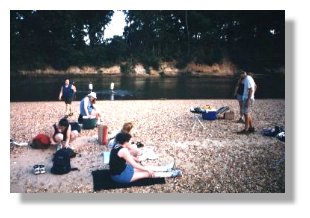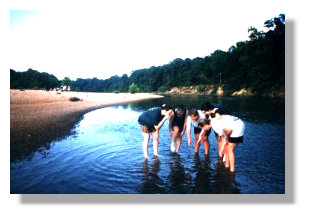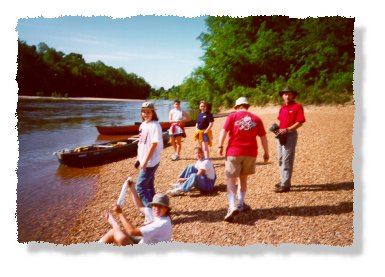
Alabama is blessed with tremendous biodiversity nestled in an interesting assortment of natural topography. One could hardly pick a better base camp than Marion for spending a summer experiencing the beauty and excitement of the great outdoors. Judson’s biology program continued its efforts of bringing students and nature together during the Spring and Summer terms with trips to rivers, swamps, marshes, to the Mobile Delta and Bay, and out into the blue green water of the Gulf of Mexico.
We had three canoe trips to the Cahaba River where we studied river mussels and numerous aquatic insects as well as identified riverine flora and creeping members of the fauna. Dr. Randy Haddock, Field Director of the Cahaba River Society, joined us on one trip where we managed to identify eight species of river mussels, including the largest mussel on the river, the Washboard Mussel, Megalonaias nervosa. We also collected Yellow Sandshells, Ebonyshells, and the Alabama Heelsplitter mussels. Dr. Haddock is an authority on Cahaba River mussels and students are routinely amazed and amused at his accounts of the reproductive biology of these strange and important bivalves.
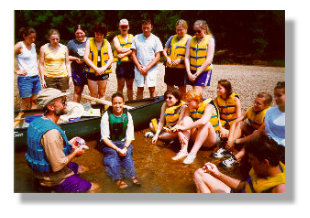
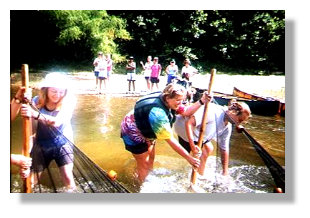

Wild Turkeys, Indigo Buntings, Crested Kingfishers, Blue-winged Teals, Ospreys, numerous swallows, Piliated Woodpeckers, Prothonotary Warblers, Killdeer, Great Egrets, a Sandhill Crane, and Great Blue Herons are some of the interesting birds sighted on trips down the Cahaba River in Perry County. We seined the current of the river and studied several species of fish and insect naiads.
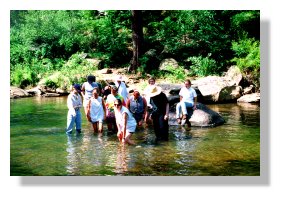
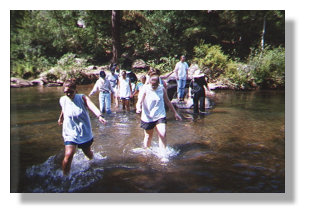
Our pilgrimage to see the Cahaba Lilies was a highlight of the summer. Each May these tall white lilies fill the main channel of the river with bright white blossoms and dark green foliage. We drove to Cathey Creek and walked the trail to Lily Shoals. Cathey Creek represent the recharge source of water for the river and we enjoyed wading up this important and pretty little creek. The lilies were in full bloom and our group waded into the river to get a close-up view of these rare plants.
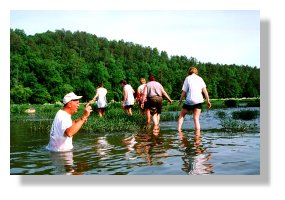
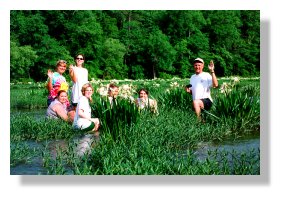
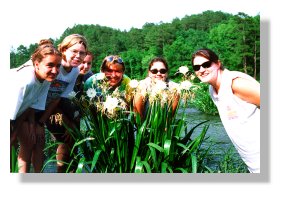
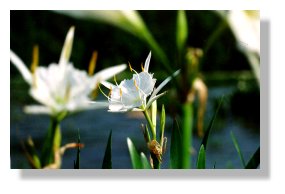
On the walk beside Lily Shoals, we observed a pair of nesting Tennessee Warblers, overhanging Mountain Laurel bushes in full bloom, three species of dogwood trees, Trillium plants, and we nibbled on wild blueberries that locals call huckleberries.

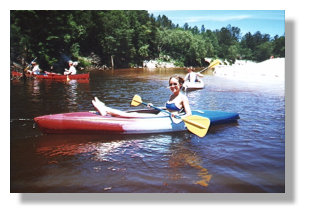
We also canoed the Escatawpa River which flows west of Mobile into Mississippi. This blackwater river has wine-colored water due to tannic acids from cypress trees. The water is red and the beaches are composed of blazing white powdery sand. This shallow swamp river is pristine and a real pleasure to float. Many of our crew did the Escatawpa in kayaks and we spent most of our time on the river in Mississippi.
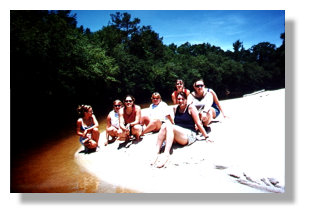
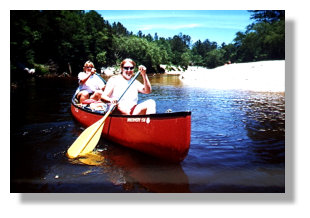
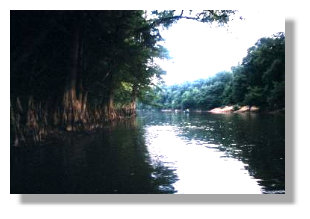
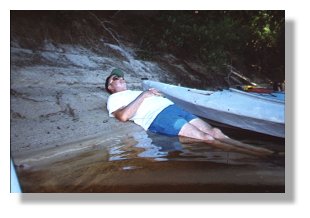

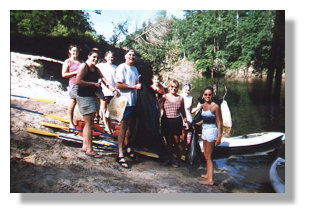
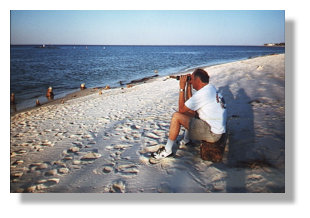

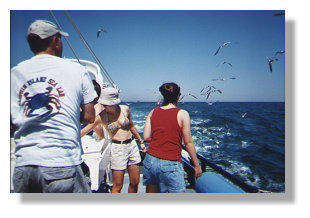
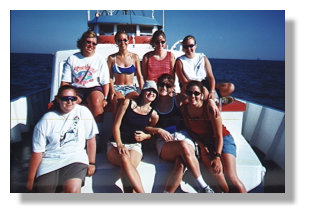
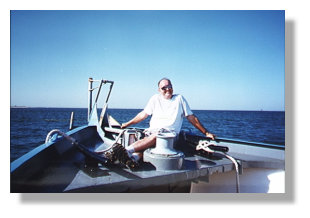

After a morning of marine biology, we took the ferry from Dauphin Island to Fort Morgan. As we neared the midpoint between Fort Gaines and Fort Morgan, history lessons raced through our minds and we discussed how Admiral Faragut took Fort Gaines in the Civil War. And how Fort Gaines was used in WWII to protect our country from German submarines. Today, the reenactment of the battle of Fort Gaines was underway and the large cannons were firing at regular intervals. Their blast seemed to shake the ferry. We wondered how effective cannons could have been against sailing ships.
Our trip to the southern tip of Alabama was highlighted by a splash in the waters of Gulf Shores. We then visited the Gulf Shores State Park, had a hot shower, and ate supper at the Gulf Shores State Park Convention Center ... an elaborate seafood buffet washed down by pitchers of ice tea... and then the long drive home.
